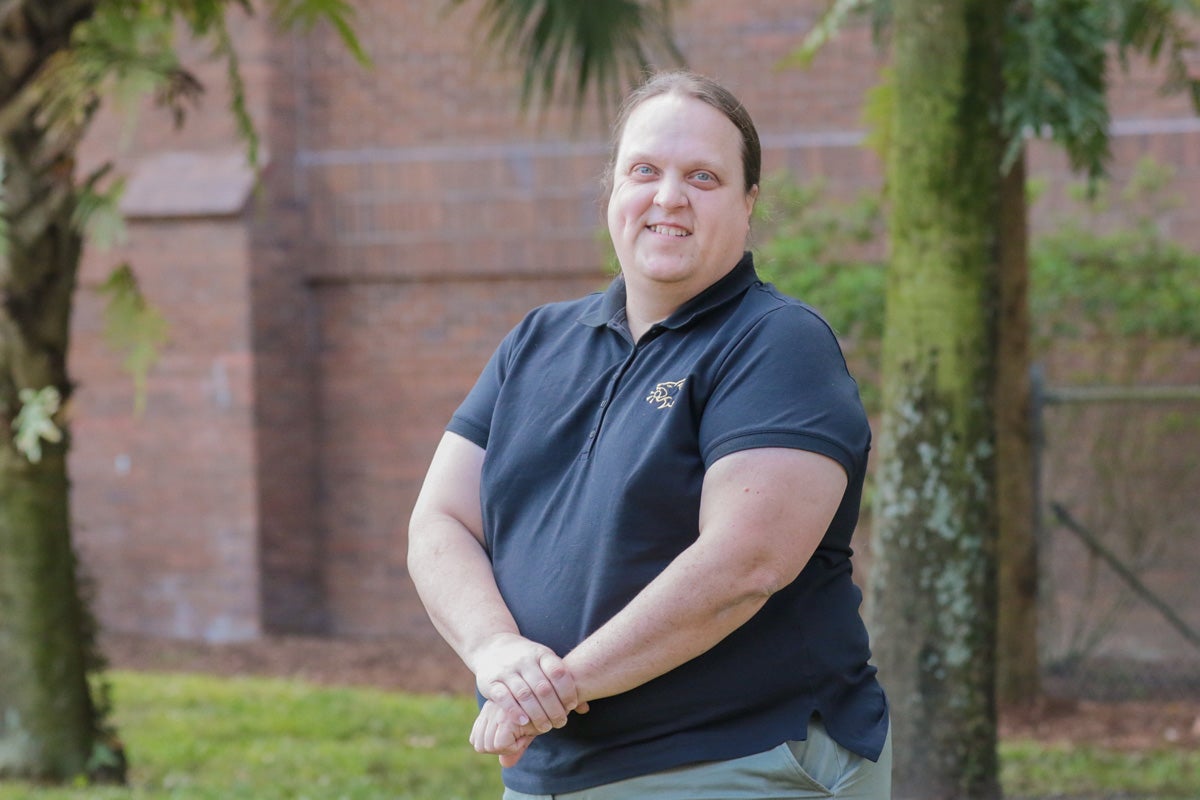The National Academy of Inventors (NAI) recently announced the induction of 169 inventors as NAI Fellows. This prestigious invitation is the highest merit for the academic inventors, whose backgrounds include science, engineering and medicine.
Florida Space Institute’s Richard Blair received one of these invitations and will be inducted at the 12th Annual Meeting of the National Academy of Inventors this summer in Washington, D.C.
Blair will join 17 other UCF researchers who have been named NAI Fellows.
We were able to sit with him and discuss this exciting nomination, his academic journey, and his advice for emerging scientists.
The body of Blair’s work that led him to this nomination is important to consider. His current focus is on the development of a chemical heat source for NASA space missions and catalysts for enabling emission-free flight using ammonia as a fuel. Long term, this means seeking to develop sustainable methods for using heat-trapping gases and converting them to more useful purposes. This pursuit is a potent combination of scientific innovation paired with a noble, practical goal, Blair says.
When asked to reflect on his career and accomplishments, Blair cites his discovery of catalytic activity in boron nitride (leading to the development of the world’s first heterogeneous metal-free hydrogenation catalyst) as what he is proud of most. What’s most exciting is that this work has opened doors and led others to follow up on the discovery. In his estimation, that is the very essence of science and the merit of scientific pursuit, he says.
Blair’s academic interest in chemistry began while pursuing a Ph.D. from the University of California, Los Angeles, in materials chemistry under Richard Kaner. After that, he completed a brief postdoctoral position at a small business innovation research company in Colorado before moving onto a postdoctoral position at the Jet Propulsion Laboratory (JPL) in Pasadena, California.
Blair credits this varied background with exposing him to new aspects of chemistry and research.
“It was at JPL that I was introduced to mechanochemistry and decided moving to academia was best to pursue this work,” he says.
That journey led him to UCF as a chemistry assistant professor in 2007, where he developed chemistry and intellectual properties around forensic identification methods, including the first-ever revenue-generating IP in the Chemistry department.
This was the first in a line of patents and technologies, which now include a greener method of partially oxidized graphite and graphene products and commercialized forensic science work at UCF, like a recent tool for law enforcement for the identification and tracking of controlled substances.
This invitation to the NAI Class of Fellows is the next step of Blair’s career.
“The invitation is a validation of the importance of intellectual property in academic research efforts and beyond that, a simple recognition that my efforts are appreciated and valued,” Blair says.
The Florida Space Institute, Blair says, has been an important setting in his academic story.
He says that all of the staff — research and administrative — have been supportive and excellent colleagues.
“My work does not fit into a single silo, and the flexibility and openness at FSI has facilitated my success,” he says.
It is in this spirit that Blair encourages students and emerging scientists to balance academia and pragmatism.
In his eyes, the combination of the two creates a strong recipe for long-term success and intellectual satisfaction.
“Although publications and grants are important for a successful academic career, don’t overlook intellectual property,” Blair says. “Be a good salesperson for your work and be willing to give up some control to see an idea flourish. Part of our responsibility to the public is to take their investment in us and make the world better.”




